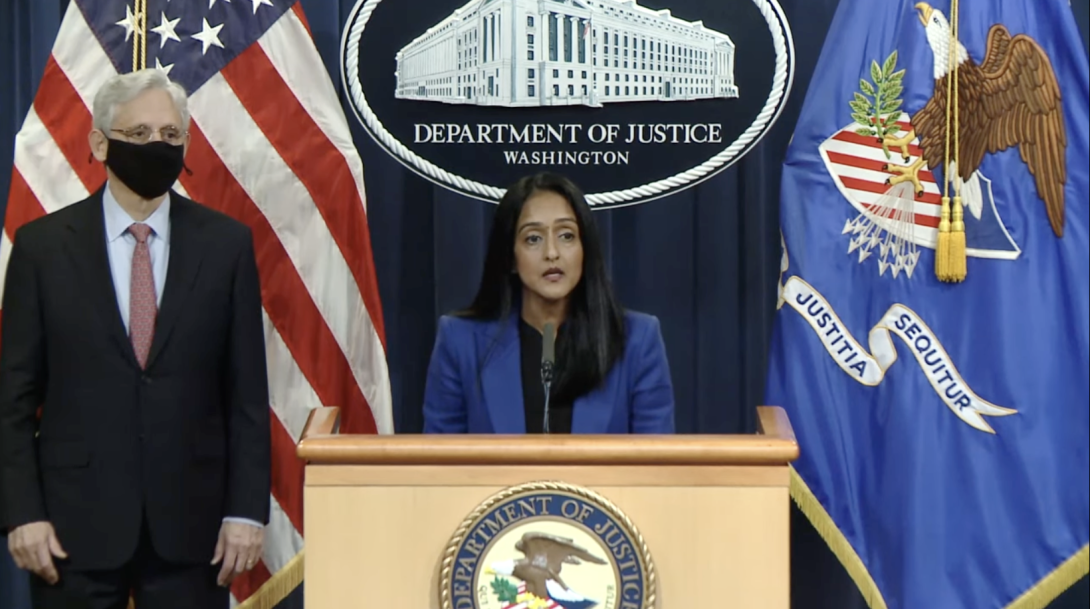INSTITUTE INDEX: Why the DOJ sued Texas over its new voting maps

U.S. Attorney General Merrick Garland (left) and Associate Attorney General Vanita Gupta announced this week that the Department of Justice was suing Texas over its new voting maps for racial discrimination. (Image is a still from this DOJ video.)
Date on which the U.S. Department of Justice filed a lawsuit against Texas under the Voting Rights Act, challenging new redistricting plans for congressional and state House districts: 12/6/2021
Section of the Voting Rights Act the DOJ claims the Texas maps violate, which is the provision banning discrimination on account of race, color, or language minority status: 2
Month when the DOJ published guidance explaining that the VRA's Section 2 prohibits "vote dilution," which occurs when an electoral practice cancels the voting strength of racial or language minority groups, and which the DOJ believes will happen under Texas's new redistricting plans: 9/2021
Number by which Texas's population grew from 2010 to 2020: 4 million
Number of new congressional seats Texas got because of that population growth: 2
Percent of Texas's growth over the past decade represented by Black and Latino people: 95
Percent of the state's two new congressional districts drawn to have Anglo voting majorities: 100
The new maps' reduction in the number of Texas congressional districts with a majority of eligible voters who are Black: 1 to 0
The reduction in the number of Texas congressional districts with Hispanic voting majorities: 8 to 7
Reduction in the number of state House districts with a Hispanic voting majority: 33 to 30
Given the state's population changes, number of Texas's congressional and state House districts, respectively, where Latinos should be able to win a seat in order for the community to achieve proportional representation: 11, 45
Number of the legislature's new congressional and state House districts where a Latino could be elected: 7, 29
In the Dallas area, miles some new voting districts extend to put urban communities of color in predominantly white rural districts: 100
Over the past three decades, number of times the state legislature has eliminated a Latino electoral opportunity in West Texas despite court rulings that this violates the law: 3
Instead of the more liberal D.C. Circuit, the conservative-stacked federal appeals circuit that will now hear the Texas case, a consequence of the U.S. Supreme Court's 2013 Shelby County, Alabama v. Holder ruling, which also ended the Voting Rights Act's federal preclearance requirement for election changes in places with a history of voter discrimination, including Texas: 5th
Total number of lawsuits Texas now faces over its election maps for diminishing the voting strength of communities of color: at least 5
Number of election cycles experts say it may take for these lawsuits to be resolved, with Texans voting under the problematic maps in the meantime unless Congress shores up weakened voting rights protections by passing legislation such as the Freedom to Vote Act and the John Lewis Voting Rights Advancement Act: multiple
(Click on figure to go to source.)
Tags
Sue Sturgis
Sue is the former editorial director of Facing South and the Institute for Southern Studies.
